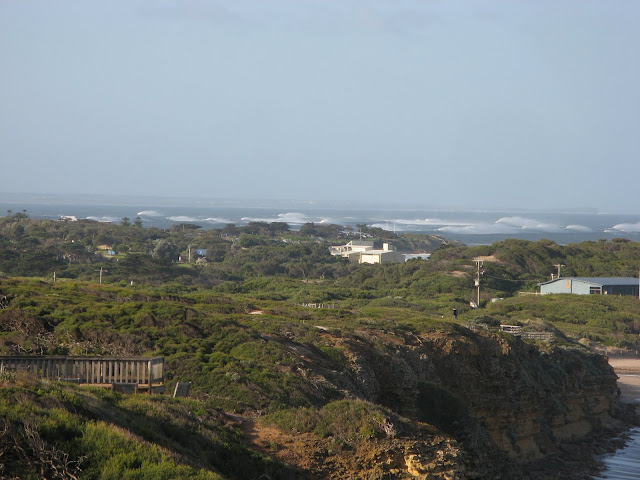4th-10th July
When I started my first internet journal my intention was to share my experiences at the Headquarters of the Sogetsu School with my students and other ikebanists in Australia. Over the past three months the journal has been read by people in Japan, the United States, Europe and beyond. Now that I have returned home I am aware that I need to be conscious of sharing my view-point as an Australian ikebanist with friends in Japan and other overseas countries.
I have set this 'blog' up so that readers may make comments. I don't know how this will work. Once again it will be a journey of discovery.
For those readers who have never been to Victoria or Australia, a little explanation. Torquay, my home town, is on the southern coast of Australia 100 kms southwest of Melbourne, the capital city of the state of Victoria. I have lived here since childhood when the town had a population of about 1,000 people. Now the population is about 10,000. The town has become famous in recent years because of the growth of the Surfing Industry. The Rip Curl and Quiksilver, clothing companies began here have their head offices in Torquay. Our climate is Mediterranean with wet winters and hot dry summers. The average annual rainfall is 650mm. Our native plants tend to have stiff leaves and stems; the flowers often have tiny petals and bright colourful stamens. (In Tokyo average annual rainfall is 1600mm, the wettest month is June, in summer, while it is the winter that is relatively dry).
Three days after returning home the weather turned more wintery, we have had rain, a little hail and strong winds from the west. On Thursday and Friday last the temperature range was 4 degrees overnight to a maximum of 12-14 Celsius in the day time. Today, Sunday, it was 8.5 C at 2.30 in the afternoon. Because of the wind chill factor it felt much colder. The winds have been coming up from the Southern Ocean so today there was a huge swell on the ocean with widely spaced waves about 5 metres high. Very dangerous for surfing even for the very fittest and most experienced.
This was the view over Torquay township. You can seen enormous waves breaking in the distance.
This is our beach on Saturday 9th. Cold, but bright sunshine.

Compared to last week.
This was the scene at the most famous surfing beach, Bell's Beach which is a half hour walk along the cliftops from our house.
There were unusually large crowds to see these huge waves because of a newspaper article in yesterday's paper.
Looking back east toward Jan Juc Beach where we live.
I took this picture, below to show the windswept trees on the edge of the clif-top, that are common along the coast. They are often twisted into wonderful shapes. I find the driftwood from them inspires my ikebana imagination.
Last week I included some pictures of our house and garden. When the sun came out again on Saturday and I took these pictures. Below is a view of the conservatory from the outside.
This Japonica is just starting to blossom and I am looking forward to picking some in the next few weeks. The purple flower is a Kennedia vine growing into a Hakea bush in our neighbour's garden.
This is a close-up of a flower bud on the yate, that I used in last weeks ikebana. The branches develop an attractive mottled white bark. The flowers grow on quite large branches and look like green dishmops when the operculum, covering the stamens, drop off. Because the seed pods that form are about the size of my clenched fist and are firmly attached to the branch, this tree will have flower buds, open flowers and old seed pods all at the same time.
Here is a close-up of a cluster of flowers on a branch. You can see some of the coverings are coming loose while others have fallen off.
This was my first version of my home-coming ikebana. I feel the leaves are 'weak' relative to the rest of the material. Also there is too much happening in the design. 
Below is my correction of the work.
The massed design looks much stronger. I have deliberately put the 'buds' and flowers on one side and the seed pods on the other.
The 'Cootamundra' wattle (acacia baileyana) is the first wattle to come out in our garden, always soon after the shortest day of the winter.
So I made this winter arrangement in a hand-made vase created by Kurihara Kyoko that she kindly gave to me at the end of the last class I attended in Tokyo. A beautiful reminder of the friendship and generosity I experienced at the Sogetsu Headquaters. Thank you.
Here is another work using some Banksia Serrata in Kurihara-san's vase.
Greetings from Christopher,
in Torquay.
Sunday 10th July 2011


































